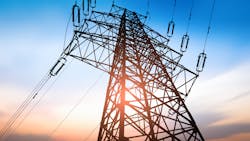America’s Infrastructure: We Need to Raise Our Grade on the ASCE Report Card
It’s hard to watch or read the news these days without hearing something about America’s Infrastructure. And if you pay attention, you will probably hear American Society of Civil Engineers (ASCE) mentioned in nearly every one of those reports. The ASCE Committee on America’s Infrastructure (CAI) publishes a Report Card on America’s Infrastructure every four years that coincides with the incoming President of the United States.
I have had the great pleasure to serve as one of the Energy representatives on CAI for the past few cycles. You can read the latest Report Card from this year at https://infrastructurereportcard.org. America’s Infrastructure overall received a grade of C-. Be sure and drill down into the Energy Category and download the full report; here is the direct link https://infrastructurereportcard.org/wp-content/uploads/2020/12/Energy-2021.pdf. You can also find Report Cards for each state as compiled by local ASCE Chapters, so take a look at your state. Some states do not have an Energy Category; if your state is one of them, this would be a great way for you to get involved.
The Energy Grade for this cycle was a C-. This is up from a D+ four years ago. The report outlines the reasons for this increase, and also covers the reasons why it didn’t go up more. One of the biggest reasons it didn’t increase more is because weather events still remain an increasing threat. The reports references that among 638 transmission outage events reported from 2014 to 2018, severe weather was cited as the predominant cause. Additionally, distribution infrastructure struggles with reliability, with 92% of all outages occurring along these segments. We have a lot of room for improvement.
ASCE has done an excellent job of elevating the civil/structural engineering profession with these Report Cards. Every year, select ASCE members from all 50 states travel to Washington to meet with their elected officials to share the Report Card and lobby for Infrastructure. On March 12, 2020, I was waiting to go into Senator Josh Hawley’s office when COVID-19 basically shut down DC and the meeting was canceled. Last March 2021, all of the meetings were done virtually. Through these efforts, ASCE has played a large part in getting the infrastructure discussion going and providing the supporting data to Congress. Not only will this help improve America’s Infrastructure, but it is good for civil engineers and many other disciplines as well.
As I write this, the U.S. Senate has just passed the US$1.2-trillion Infrastructure Bill. I don’t want to get political, but it is my understanding that only US$550 billion of that is actually allocated to real infrastructure projects; or as we say in the civil/structural engineering industry ‘bricks and mortar.’ In our electrical grid world, it probably should be changed to ‘steel, wood, FRP, concrete, and aluminum (conductors).’ Regardless of what we call it, it is the structural part of what keeps the power lines up and the electricity flowing.
I am not going to criticize the remaining US$650 billion social expenditures, but I am glad to see the US$550 billion that will be spent on our actual physical infrastructure. America once had the best infrastructure in the world; that is not true anymore. As we all know, much of our infrastructure today, including our electric grid, is old, weak, and underserved.
I have read many different numbers, but in general US$148 billion is directed toward the electric power and grid industry, with US$28 billion new for “T&D” projects, and $47 billion for resilience to weather events and cybersecurity. In addition to the funding, there is a controversial no-cost provision that would grant FERC new powers to effectively veto state decisions rejecting new transmission siting. We shall see if this survives the states' rights lawsuits that I am sure will occur.
At the possibility of offending my friends on CAI in the other infrastructure categories, I will say that energy — and specifically electricity — is arguably the most important part of our entire infrastructure. Without electricity, there is no communication. As many of us have personally experienced, without electricity there is no internet, no commerce, no drinking water, no water treatment, no aviation, no broadband, no ports, no rail, no schools.
Our society today has become so reliant on electricity that it completely halts without electricity. When I make these statements, some have said to me ‘but I can still drive my car if the electricity goes out.’ Where are you going to get gas (petrol) if the gas stations don’t have energy for the pumps? How are you going to pay for the gas if the credit card communications don’t work? How are you going to charge your car (as we transition to more and more EVs)? What about traffic control? It is easy to see that nearly every part of our infrastructure relies on energy/electricity.
ASCE has an entire series of Manuals of Practices and Standards that are specifically written for the overhead grid, and many of them are being updated now. If you aren’t familiar with them already, I would encourage you to discover them and use them. One of the recommendations to raise the grade from the Energy Report Card is to “Require the adoption of consensus-based standards for all overhead T&D lines, structures, and substations to ensure safety and increased reliability.”
We need to do our part to support the rest of America’s Infrastructure.
About the Author
Otto J. Lynch
Otto J. Lynch is president and CEO, Power Line Systems. He is a member of American Society of Civil Engineers, IEEE, and National Electrical Safety Code. He is a registered professional engineer.
